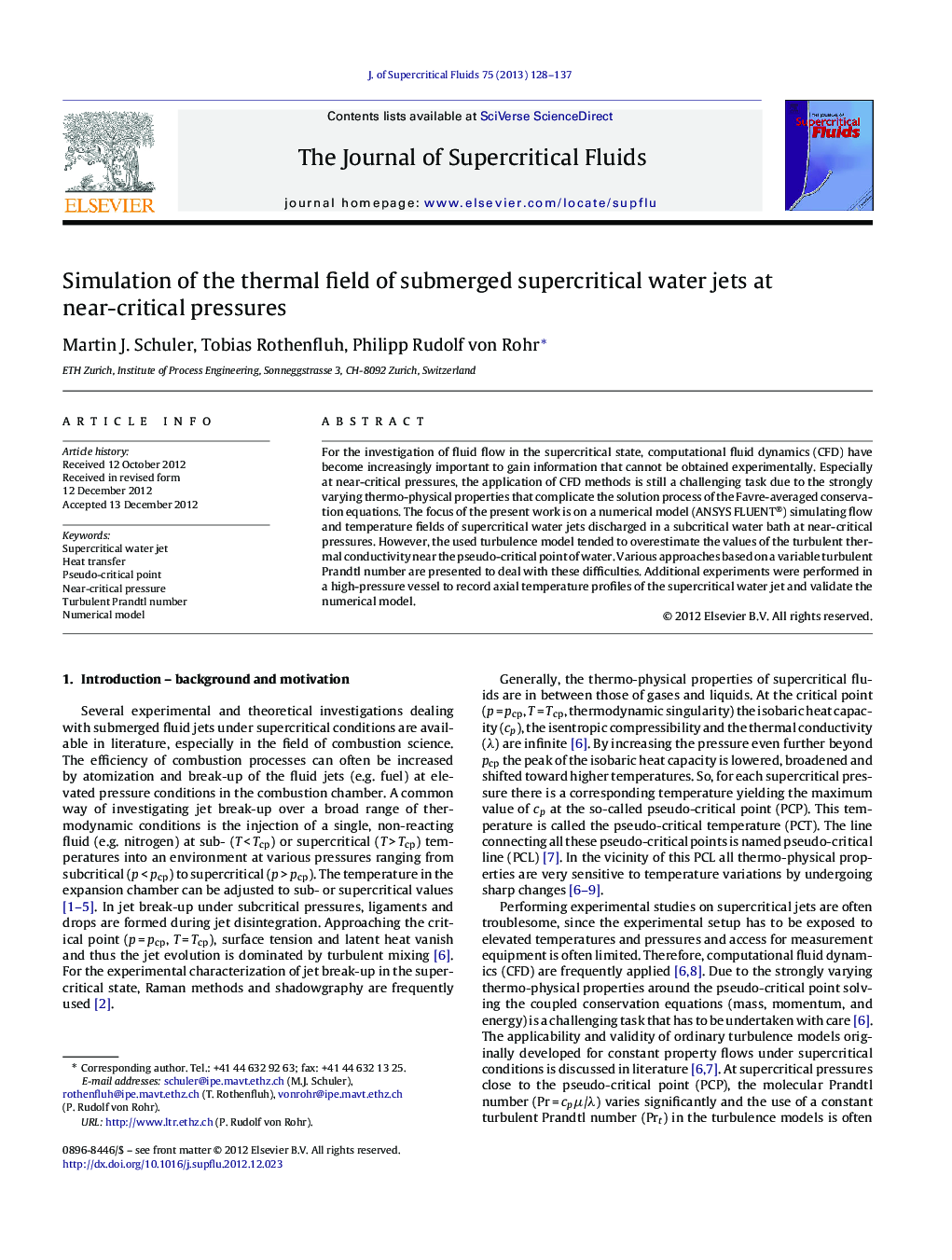| Article ID | Journal | Published Year | Pages | File Type |
|---|---|---|---|---|
| 230900 | The Journal of Supercritical Fluids | 2013 | 10 Pages |
For the investigation of fluid flow in the supercritical state, computational fluid dynamics (CFD) have become increasingly important to gain information that cannot be obtained experimentally. Especially at near-critical pressures, the application of CFD methods is still a challenging task due to the strongly varying thermo-physical properties that complicate the solution process of the Favre-averaged conservation equations. The focus of the present work is on a numerical model (ANSYS FLUENT®) simulating flow and temperature fields of supercritical water jets discharged in a subcritical water bath at near-critical pressures. However, the used turbulence model tended to overestimate the values of the turbulent thermal conductivity near the pseudo-critical point of water. Various approaches based on a variable turbulent Prandtl number are presented to deal with these difficulties. Additional experiments were performed in a high-pressure vessel to record axial temperature profiles of the supercritical water jet and validate the numerical model.
Graphical abstractFigure optionsDownload full-size imageDownload as PowerPoint slideHighlights► Strongly varying properties of water around the pseudo-critical point. ► Simulations of submerged supercritical water jets at near critical pressures. ► Difficulties in calculating the turbulent heat transfer by the turbulence model. ► Different approaches for a varying turbulent Prandtl number. ► Overall heat transfer of submerged supercritical water jets predicted satisfactory.
